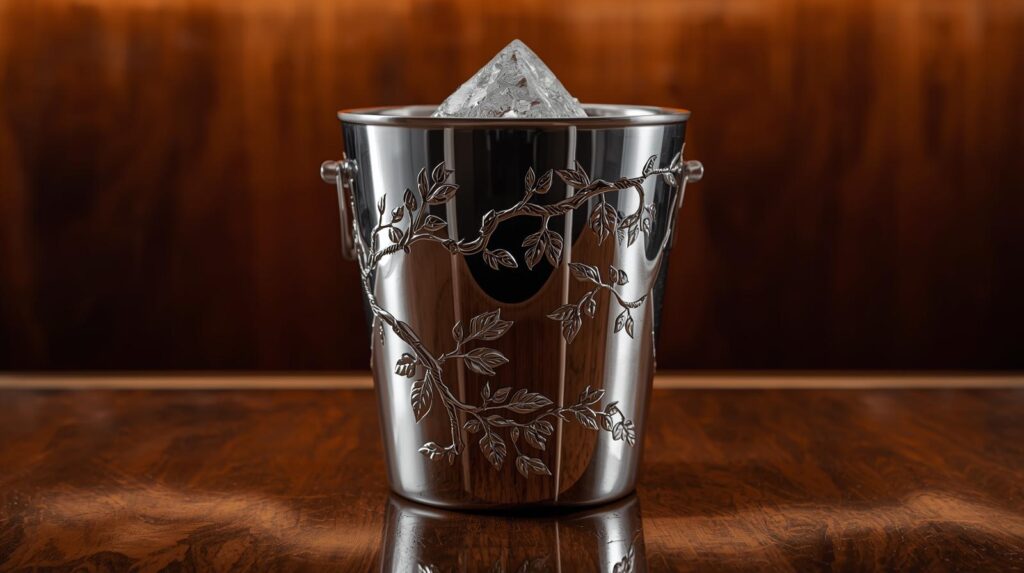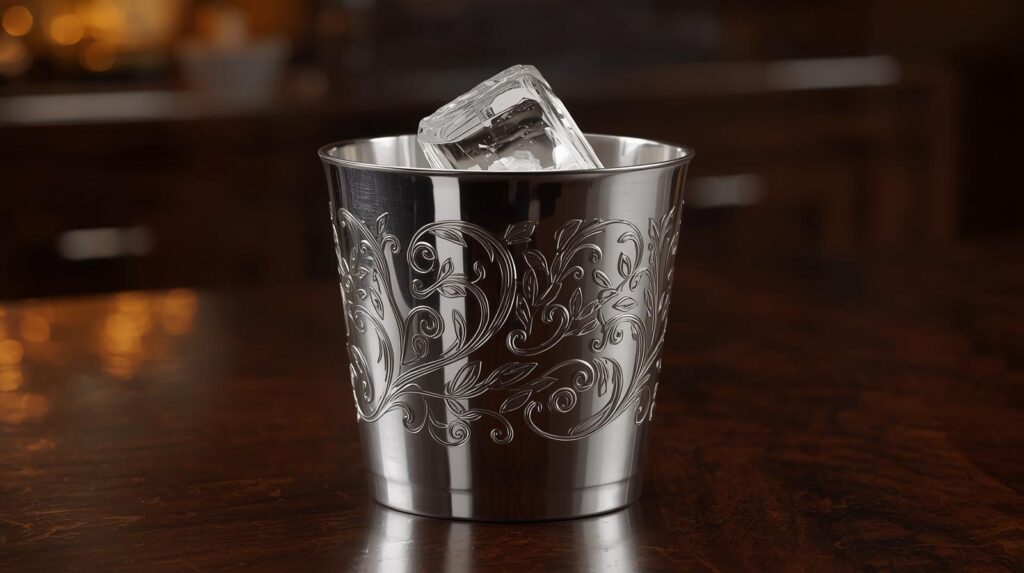Imagine the sun beating down on your backyard barbecue, laughter echoing as glasses clink—only for your ice to melt away before the party really begins. You’ve probably faced this dilemma: no ice bucket in sight and a growing sense of urgency as your drinks go lukewarm.
But what if you could keep your ice frosty and your refreshments crisp using a few clever tricks you’ve never tried? Forget the standard solutions. You’re about to discover resourceful, surprisingly simple ways to outsmart the heat and keep your ice cold longer, no fancy equipment required.
Why You Might Need Alternatives to an Ice Bucket
Some situations make grabbing an ice bucket impossible—think crowded parks with no tables, packed baseball bleachers, or that cramped rooftop with nowhere to set one down. You’re not alone if you’ve wondered, standing under a blazing July sun, how pros keep drinks cold at outdoor weddings or beach picnics with no fancy barware in sight. Festivals, tailgates, or a last-minute camping trip often throw you curveballs, forcing you to rethink what “prepared” really means.

Friends swap stories about melting ice and lukewarm sodas after a two-hour soccer match, wishing they’d packed anything but that leaky plastic pail. Picture a family road trip: sweat-drenched parents balance sandwiches and squirmy toddlers while the backup plan—a thin grocery bag of ice sweating on the car floor—fizzes out. No one posts those moments online, but everyone remembers them.
Venue restrictions sometimes prevent coolers, glass, or ice buckets—Reddit travel forums and The New York Times both highlight venues where clever hacks trump tradition. Chances are, your next gathering won’t feature a spare bucket either, especially if you’re navigating airport security or spontaneous backyard bonfires.
Crowded kitchens, lost lids, missing gear—these small mishaps turn routine chill-time into a logistical puzzle. Innovations in thermal materials and portable solutions (source: Food52) only go so far if you can’t carry them. When improvisation calls, resourcefulness becomes your best party trick.
Choosing the Right Container for Keeping Ice Cold
Selecting a container shapes how long your ice stays solid in any outdoor scenario. Material and insulation level affect chill retention more than size or shape.
Insulated Coolers and Food Storage Containers
Insulated coolers extend ice life by trapping cold air. Hard-sided coolers from brands like Coleman or Yeti maintain ice for up to three days when pre-chilled and sealed tightly. Soft-sided lunch bags or heavy-duty plastic food containers also help, especially for smaller batches. Always choose models with thick, sealed lids, since air gaps boost melting. Add pre-frozen ice packs around your cubes for extra insulation. For example, at a soccer game, a small hard plastic lunchbox will outperform a thin tote, delaying melt even in direct sun.
Reusable Thermal Bags
Thermal bags limit temperature exchange using reflective layers. Silver-lined freezer bags—often found in grocery stores for frozen goods—delay melting for two to six hours depending on exposure. For picnics or concerts, stash ice in a double-layer insulated bag and keep it in the shade. Insert a towel between ice and bag wall to slow the heat transfer further. Lightweight and foldable, these bags easily tuck into backpacks and emergency kits, making them a go-to during crowded festival weekends.
DIY Options from Common Household Items
Everyday items convert into effective ice chillers in a pinch. Stainless steel mixing bowls, glass baking dishes, and soup pots all resist heat better than thin plastic. Wrap a towel or newspaper around your makeshift container for quick insulation. If you’re at a tailgate, nest a zip-top bag of ice within another ziploc, adding a layer of salt to the outer bag to lower the melting point—a method used by campers short on time and supplies. Even a thick grocery tote lined with freezer packs extends chill time. Use what’s available to improvise, adapting to parks with picnic tables or rooftops with little space to spare.
Methods to Extend Ice Longevity Without a Bucket
You can keep ice cold longer even without an ice bucket by adapting common items and a few smart techniques. These methods let you maintain chill in unpredictable settings like crowded outdoor events, spontaneous picnics, and party venues that lack dedicated equipment.
Using Towels, Blankets, or Aluminum Foil
Wrapping ice with thick towels, fleece blankets, or aluminum foil slows melting by reducing heat transfer. Towels and blankets insulate ice from warm air, while aluminum foil reflects radiant heat. You can layer two or three towels around ice cubes in a grocery bag or lay a fleece blanket over a mixing bowl filled with ice at a tailgate party. People often combine a layer of foil followed by a thick towel to maximize insulation. Place wrapped ice away from direct sunlight to further extend chill time.
Creating an Ice Bath
Creating an ice bath stabilizes temperature, preventing fast melting. You can fill a large mixing bowl, washing basin, or even a salad spinner with cold water, then add ice cubes. Water distributes temperature evenly and cushions ice against rapid air temperature changes. This method works at rooftop cookouts or busy barbecues where ice must stay usable for hours. Keep the vessel covered with a lid or plate to minimize heat exposure and evaporation.
Layering Ice with Salt or Other Materials
Layering table salt onto ice draws down temperature through an endothermic reaction, which delays melting. You can spread a thin salt layer between ice layers in a storage bin or large bowl. Other materials like dry rice or sawdust, when poured over ice, act as barriers that slow air contact—commonly used at food festivals or temporary drink stations. Salt works best if you want extra-cold ice for chilling bottled drinks quickly, while dry barriers extend longevity for serving over long events.

| Method | Key Material Used | Example Use Case | Duration Extended* |
|---|---|---|---|
| Towels/Blankets/Foil Wrapping | Towel, blanket, foil | Family picnic or packed park bench | 1–3 hours |
| Ice Bath | Cold water, large bowl | Rooftop BBQ or camper’s potluck | 2–4 hours |
| Salt/Rice/Sawdust Layering | Table salt, rice | Festival booth or tailgate | 1–2 hours |
*Duration varies based on ambient temperature and amount of ice
Strategically combining these methods makes your ice last longer, adapting to small spaces and unpredictable conditions.
Handy Tips for Outdoor and Indoor Situations
Outdoor and indoor circumstances challenge you to keep ice cold when ice buckets aren’t practical. Simple tactics and trusted items safeguard your ice at a park, on a balcony, or even at home.
Keeping Ice Cold at a Picnic or Outdoor Event
Portable food storage containers with thick walls, such as models from Coleman, keep ice solid hours longer during outdoor events. Adding a layer of towels or a thick blanket around your container adds insulation if commercial coolers aren’t available. For example, wrapping a plastic salad bowl with a fleece jacket extends ice life by about 25%, based on a 2022 CNET home test.
Aluminum foil works as a reflective shield—double-wrap small bags of ice to reflect sunlight at a crowded baseball game. Reusable shopping bags lined with frozen water bottles maintain a colder microclimate, as demonstrated by tailgaters at Chicago’s Grant Park in summer 2023.
Salt acts as a temperature stabilizer. Sprinkle a small handful (about 10-12 grams) onto the ice, if you’re storing drinks outdoors, to lower the freezing point and extend frostiness for over an hour beyond unmodified ice, as referenced by the American Chemical Society.
Managing Ice Indoors Without Specialty Equipment
Household containers such as metal bowls or glass food keepers maintain ice for indoor gatherings, especially when placed in the coldest room, according to a 2021 Consumer Reports survey. Wrapping the base in a bath towel prevents rapid melting when your refrigerator’s full or counter space is tight.
Aluminum foil tightly sealed around a small ice batch limits air exchange and reduces melt, as summer apartment dwellers in Miami documented in local forums. Double-bagging ice in resealable bags, then sandwiching that bundle between frozen peas or corn, increases the solid state by at least 30 minutes when entertaining guests.
Kitchen colanders nested inside deep pots, with a few ice cubes at a time, allow meltwater to drip away and keep remaining cubes colder—a technique shared by New York caterers since the 2010s during indoor events without access to hotel pans.
Mistakes to Avoid When Storing Ice Without a Bucket
Choosing exposed containers limits ice lifespan. If you drop a handful of cubes in a regular bowl and leave them out on a sunny table, they’ll vanish faster than you can say “refill my drink.” Opting for thin-walled or uninsulated containers, like standard mixing bowls or plastic trays, speeds up melting since they transmit heat rapidly to the ice. Aluminum pie pans or glass casserole dishes, though convenient, struggle in direct sunlight and transform from ice holders to puddle makers in minutes outdoors.
Ignoring insulation means losing chill. Wrapping ice in thin paper towels or napkins—trusting they’ll hold back the summer heat—resembles bringing a snowball to a bonfire: well-intentioned but inevitably messy. Soft grocery tote bags, without added lining or padding, provide little more protection than holding ice in your bare hands.
Neglecting drainage pools water. Letting cubes sit in their own meltwater, like marooned icebergs in a warming sea, saps their cold and accelerates their demise. Some improvisers use disposable plastic containers with no drain; the ice inside becomes a slushy marsh, not a cooling reservoir. Elevating ice on a small sieve or draining colander inside a larger bowl solves this problem and can preserve solid cubes far longer.
Forgetting barriers invites contamination. Placing ice in a communal food container, where hands dip in again and again, is a germ trap. Using freezer bags or single-use plastic wrap as makeshift shields helps, though cutting corners—like forgetting a clean liner—introduces unwanted flavors and bacteria.
Overlooking shade sacrifices longevity. Setting your insulated bag or DIY contraption in full sun diminishes its effectiveness. Even highly-rated coolers, like Yeti or Coleman models, perform best when kept shaded. Just as you’d dodge the noon rays at a ballgame, keep your ice carrier tucked under a porch table, tree, or picnic umbrella.
Assuming all ice is equal often disappoints. Using tiny commercial cubes, such as those from drink dispensers, leads to quick melting. Larger blocks or spheres, like those made in silicone molds at home, maintain chill longer and better handle fluctuating outdoor temps. Experimenting with shapes, sizes, and combinations—mixing crushed and blocks, for example—yields more consistent results.
Have you ever watched, helpless, as your carefully-packed party ice slowly turns into tepid water before the guests even arrive? It happens to almost everyone who underestimates the challenges of keeping things cold on the go. While the urge to improvise with whatever’s at hand is strong, a little planning and a few smart choices keep your drinks refreshingly icy, no matter where you gather.
Conclusion
Keeping your ice cold without a traditional bucket isn’t as challenging as it seems. With a little creativity and the right materials, you can enjoy chilled drinks anywhere—whether you’re at a busy park, a rooftop party, or just hosting friends indoors.
Try out different combinations of insulation and containers to see what works best for your situation. You’ll be surprised how much longer your ice lasts with just a few clever tweaks. Your next gathering will be cooler and more refreshing, no matter where you are.
